
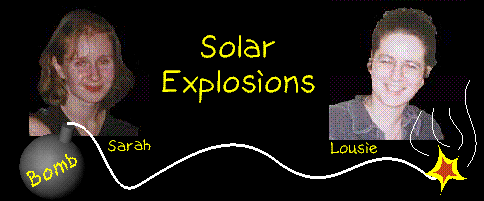


|

|

|
| On a clear day the Sun is bright (do NOT look at it!) and hot. It's a bit like having a bright theatre spotlight in the sky. But is it really like that? |

|
| The answer is no. There are many differences between a spotlight bulb and the Sun. How many differences can you think of between the Sun and an electric bulb? | |
| Here is one to get you started.... a spotlight bulb gives a constant amount of light and nothing much different happens to the bulb filament for hours and hours and hours.....until it breaks! | But, in comparison, the Sun is a real fire cracker! It is constantly changing its appearance, and large and small explosions are constantly going off all over its surface. |
| In fact it's a good job we are 150,000,000 kms away because it's not a very pleasant place to be near. The good thing about it is that it's going to go on in much the same way it is today for millions and millions and millions of years..... until it breaks! Well, it doesn't break, but it will eventually `switch off'! But that, as they say, is another story. |

|
One of the best ways to see all this activity (explosions and things)
is to look at an X-ray picture (I said X-ray, not X-rated!) of the Sun.
Do you know the difference?! Take a look
at the
X-ray
movie on the right.
Can you see the very bright regions on the Sun? These are called active regions because they are active! They are the places where extra special explosions can take place. The X-Ray images of the Sun you see here were all taken by the Soft X-ray Telescope (SXT) onboard the Yohkoh Copyright Yohkoh Data Archive Centre, MSSL, Department Space and Climate Physics, UCL. |
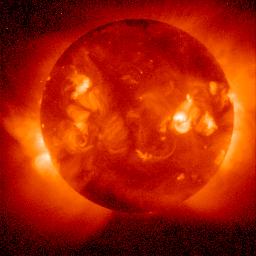
|
| The image in the centre is an X-ray movie showing images taken over a few hours. Do you see what happens? |
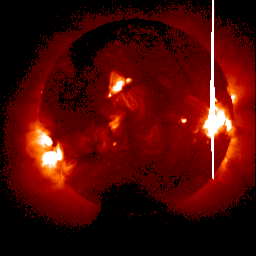
|
In that active region on the West (right) limb, a small region suddenly gets
super-bright. There was a really big explosion - so big that the camera couldn't
soak up all the X-rays in that small area and they affected several complete
columns of the image too (the long vertical white streaks).
Copyright Yohkoh Data Archive Centre, MSSL, Department Space and Climate Physics, UCL. |
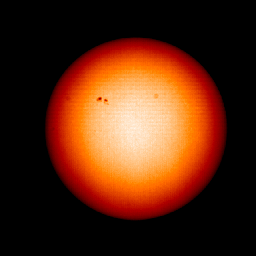
|
The left hand image is a picture in visible 'ordinary' light and
apart from the dark sunspots on the surface of the Sun all looks
reassuringly calm and quiet.
Perhaps that's how we like to think of the Sun. But it's not like
that all!!!! Now you can that it's very important that we
look at as many
wavelength
as possible when we study the Sun - if
we don't we might miss what's going on!
Copyright Yohkoh Data Archive Centre, MSSL, Department Space and Climate Physics, UCL. |

They're Hip! They're Happening! We Dig Those Groovy Flares!Click on the images to find out more. |

|
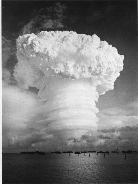
|
Everything You Ever Wanted To Know About Flares And Explosions But Were Afraid To Ask. |
Are They Dangerous? Well, let us answer that one.... |

|

|
Why Does A Flare Happen At All? |


|